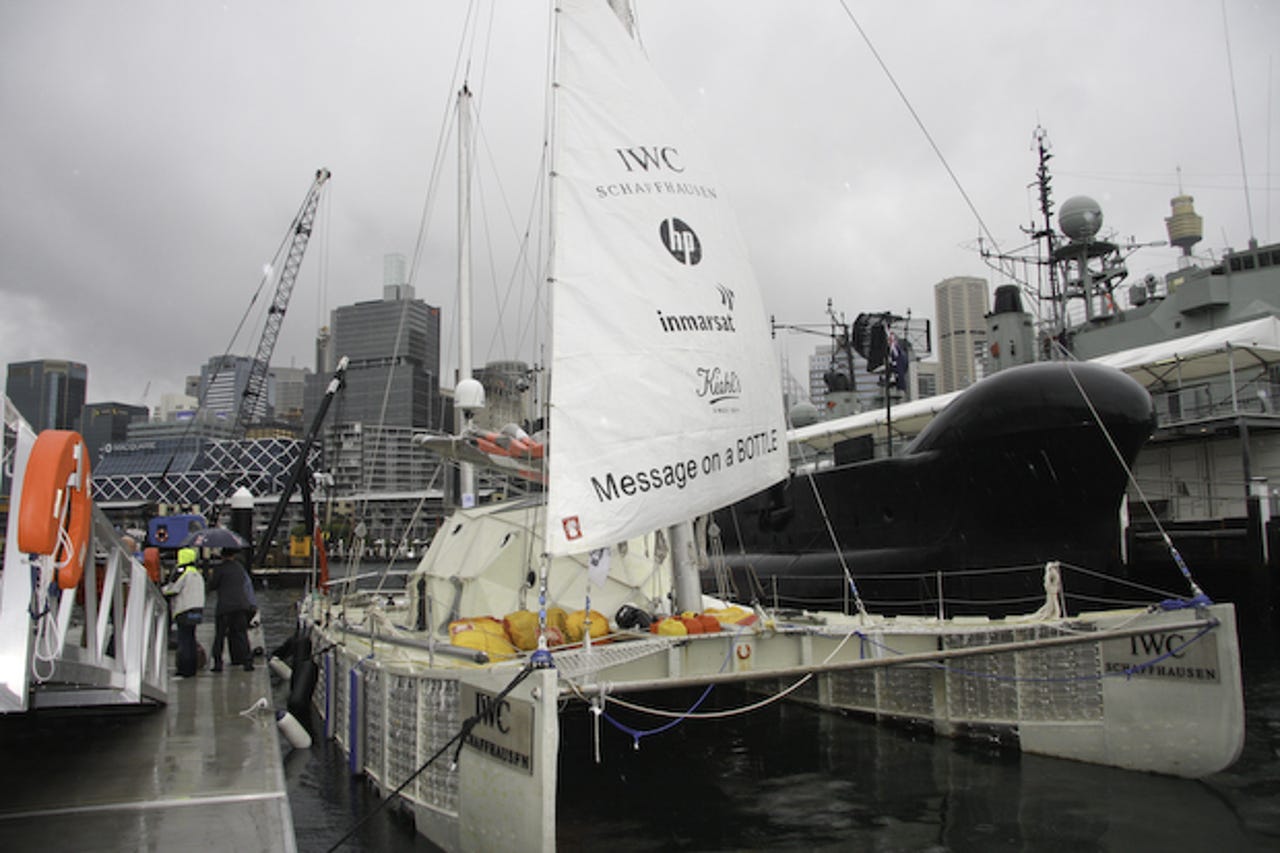The tech keeping Plastiki afloat: photos


The Plastiki completed its journey on Monday after docking at Sydney's National Maritime Museum.
The crew of the Plastiki used satellite data gear from Inmarsat and HP laptops and phones to broadcast classroom sessions and news interviews from the middle of the ocean. Over 16,000 people followed the voyage of Plastiki through Twitter and Facebook alone.
The HP Mini Note catches some rays on the deck of the Plastiki.
No land in sight for miles, but the crew stayed updated with every kilometre it covered. One of the crew members even stayed in touch with his wife via Skype as she gave birth.
Inmarsat kept the Plastiki in touch with the land and emergency services.
The operations centre of the Plastiki keeps the boat going. The Plastiki is powered by several car batteries. The crew had to make modifications to the power supply to make sure it could go the distance.
The Plastiki and its crew make their way to the finish line in Sydney on Monday.
Skipper Jo Royle invites us to have a look inside the living quarters.
This is the armadillo-like shell that the crew members lived in during the four-month journey.
Inside the armadillo.
Skipper Jo Royle tells us that the walls inside the armadillo are made from PET bottles with a foam core, meaning that the boat was able to bend and stretch on the voyage.
David de Rothschild and the panel talk about the tech below deck. (From left to right: David de Rothschild; Piers Cunningham of Inmarsat; Sundeep Khisty of HP; Jo Royle and Matthew Grey, project lead on the Plastiki).
A strip of the recycled plastic material that went into making the living quarters.
The catamaran-shaped Plastiki is kept afloat by hundreds of PET bottles lined within the boat's arms, or amas.